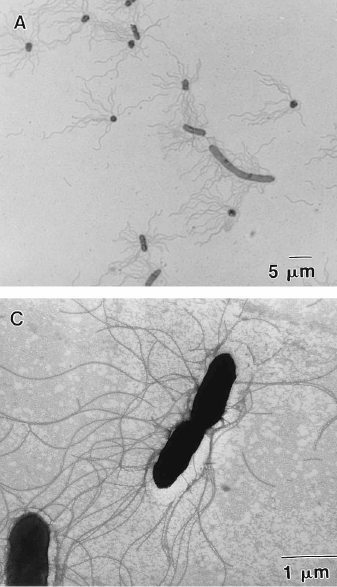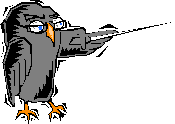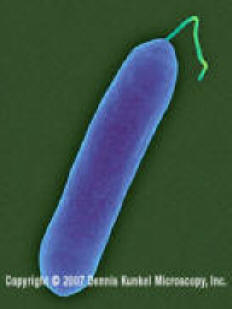 Anything
you can do I can do better...
Anything
you can do I can do better...
Nice to meet you
Salmonella enteritidis
is a rod-shaped, gram negative, non-motile bacteria, that does
not form spores. Unlike other
strains of Salmonella that are
primarily adapted to people, Salmonella
enteritidis is primarily adapted to animal hosts, at least for the beginning
of its life cycle.
S. enteritidis are considered facilitative anaerobes, which
means that these bacteria can survive with or without oxygen.
This
broadens the environments in which they
can be found.
Nice ride
Salmonella enteritidis
move through their host’s intestines via flagella.
As shown in the
images,
S. enteritidis was grown and observed on HMM plates using an oil
immersion objective. Take note of
the numerous flagella that extend from the bacteria cells.


To the left
is another image of
S. enteritidis as it can be observed
migrating on HMM and GI motility media.
This culture migrated 5-10 mm from the initial inoculation site over a
period of 6 hours. It is also
interesting to note that equal migration distances were observed when conducting
this experiment aerobically
verses anaerobically. This provides
evidence that these bacteria are facilitative anaerobes.
This experiment was also conducted on a different species,
S. pullorum,
that lacks flagella. As expected, no
apparent migration was observed. The
flagella drastically affects the motility and, therefore, the ability
of the bacteria to migrate and cause disease. S. enteritidis is currently
the leading species of Salmonella that causes illness in the
United States; S. pullorum is much
easier to contain where as the non-motile state drastically impacts
the ability to cause disease.
Inter-Bacteria Communication
(Impressive for a uni-cellular bacteria)

Although bacteria are uni-cellular, new
technology has enabled scientists to discover a new inter-bacteria communication
between Salmonella enteritidis cells.
S.
enteritidis has recently been discovered to release
acyl-homoserine lactone (AHL), which is a chemical that acts as a communication
signal between cells. This chemical
enhances the growth of the cells and increases virulence.
As the bacteria use their flagella to swim along, they release small
amounts of AHL. Once the
concentration of the AHL is strong enough in a particular area, this serves as a
signal to all of the cells to attack so that the hen’s egg can be infected.
The idea that bacteria cells can communicate chemically is known as
quorum-sensing.
Where can
Salmonella be found?
Home
 Anything
you can do I can do better...
Anything
you can do I can do better...




